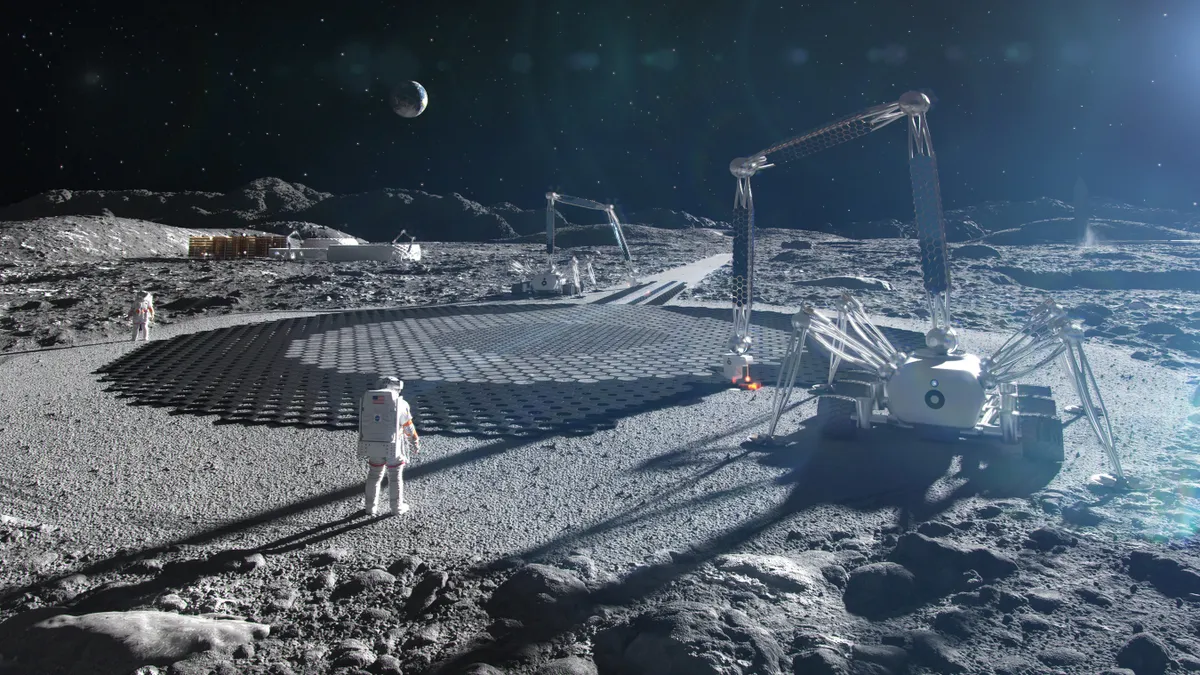Dive Brief:
- NASA awarded 3D printing firm Icon $57.2 million to continue to research and develop technology that could help create structures on the moon’s barren surface, the company announced Tuesday.
- Austin, Texas-based Icon received the funding under Phase III of NASA's Small Business Innovation Research program, which funds startups and companies working to meet federal research and development needs. The new NASA SBIR Phase III award will support the development of Icon's Olympus construction system, which is designed to use local resources on the moon and Mars as building materials, according to a NASA press release.
- Icon plans to use the money to continue its research into the uses of locally available materials on the moon to build landing pads, blast shields and roads. The continued funding comes as both public and private entities work towards NASA’s goals for lunar exploration.
Dive Insight:
The award is a continuation of ICON's work under the SBIR dual-use contract with the U.S. Air Force, partly funded by NASA, according to the agency. The contract runs through 2028.
The thinking behind using lunar regolith, or moon dust, as a building material is not only because it is abundant on the moon’s surface, but also to offset the cost of shipping objects and resources to space.
Melodie Yashar, director of building design and building performance at Icon, told Construction Dive in an email last year that the cost of launching habitat and large-scale infrastructure from Earth was “prohibitively expensive.”
Icon plans to use lunar regolith samples brought back from Apollo missions as well as various regolith simulants to determine how they behave mechanically in simulated lunar gravity, according to the release.
"To change the space exploration paradigm from 'there and back again' to 'there to stay,' we're going to need robust, resilient, and broadly capable systems that can use the local resources of the moon and other planetary bodies,” said Jason Ballard, Icon co-founder and CEO, in the release.
Icon’s mission is in support of NASA’s Artemis program, which eventually aims to put people back on the moon. Other companies, such as a branch of Lockheed Martin, also recently received grants from the space agency totaling $19.4 million to build solar panels and conduct environmental testing for the agency.














